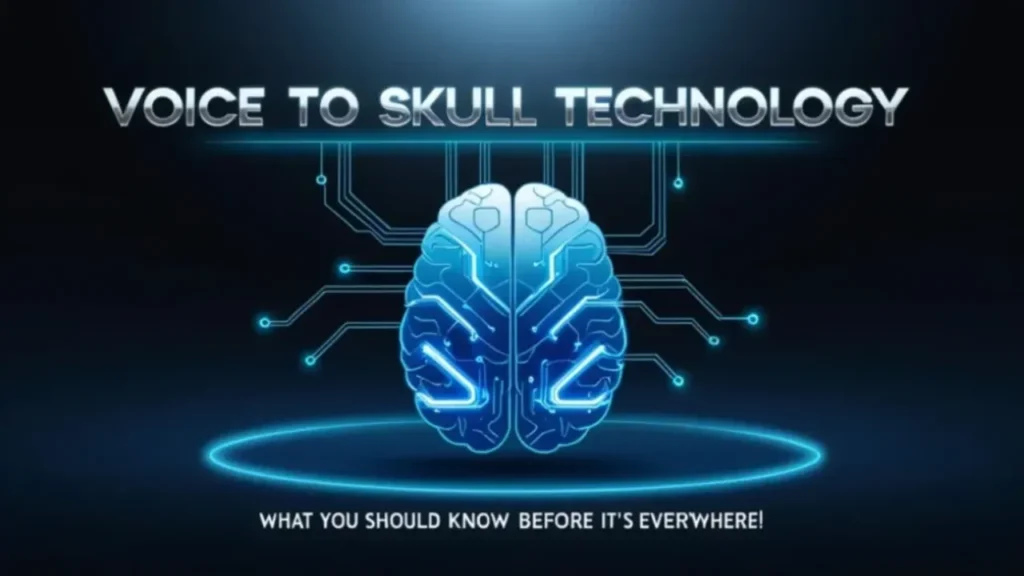Voice to Skull (V2K) technology employs microwaves to transfer sounds directly into the human cranium, creating a realistic effect without additional speakers or gadgets.

Voice-to-Skull (V2K) technology is one of the most contentious aspects of microwave research, frequently associated with mind control accusations and military operations. Based on the Frey effect, it allows sounds to be received directly inside the human head without the use of speakers. While its science is real, its weaponization is hotly discussed.
What is Voice to Skull (V2K) Technology
Voice to Skull , also known as the microwave auditory effect, is the ability to hear noises inside the skull generated by pulsed radio frequencies. The effect, first seen during World War II radar studies and intensively explored by Allan H. Frey iVoice to Skulln 1961, is explained by thermoelastic expansion in brain tissues. A short microwave pulse mildly warms tissue, causing a pressure wave that the inner ear perceives as sound. NASA later confirmed the technique. Unlike hallucinations, these sounds are actual and caused by microwave energy.
Voice to Skull Key Features and How It Works
The perception of sound is determined by pulse form, length, and frequency. When a microwave pulse with a short rise time is directed at the head, it emits audible clicks, pops, and even speech-like signals. The reported frequencies span from 200 MHz to 3 GHz, with higher millimeter waves enabling stealth applications.
Notable characteristics include:
- Intracranial sound perception inside the head
- Variety of sounds: buzzing, knocking, hissing, or words
- Instant effect: sound stops when pulses stop
- Bypassing hearing pathways: even nerve-deaf individuals perceive it
- Stealth nature: inaudible to outsiders
This makes the phenomenon fascinating yet controversial, as it challenges conventional understanding of sound transmission.
Why It Matters and Alleged Harms
Supporters say that Voice to Skull could allow for clandestine communication, but critics point to potential misuse. Accused victims claim symptoms similar to Havana Syndrome, including as migraines, tinnitus, and neurological imbalance. Others claim they have been subjected to deliberate abuse using “synthetic telepathy,” in which unpleasant voice messages are broadcast directly into their skulls.
Reported side effects include:
- Physical sensations like head pressure or tingling
- Burns and clotting from alleged directed energy weapons
- Psychological distress including sleep deprivation and paranoia
While many reports may overlap with mental health conditions, the possibility of misuse keeps the debate alive.
Operational Parameters and Limitations
Experimental data shows thresholds at 0.02–0.4 J/m² fluence, creating just-perceptible clicks with minimal heating. Distances up to 100 meters were tested successfully, but scaling this to weapon-grade intensity is challenging.
Limitations include:
- Large equipment size for high-power systems
- Overheating risks if energy is raised too high
- Difficult beam focusing for long-range targeting
- Unrealistic claims of thought control beyond auditory clicks
Renowned bioengineering expert Kenneth Foster argues that harassment through V2K is improbable, as effective devices would cause tissue damage before achieving unbearable loudness.
Final Take
Voice to Skull (V2K) technology reveals the intriguing interactions microwaves can have with the human body. The microwave auditory effect is scientifically valid, but employing it as a clandestine weapon is more reminiscent of science fiction and conspiracy theories. While the physics are established, accusations of worldwide harassment or “synthetic telepathy” lack substantiation. V2K is currently regarded as a scientific curiosity with significant ramifications for safety regulations, defense research, and public awareness.
FAQ Section
Q: Is Voice to Skull technology scientifically real?
A: Yes, the microwave auditory effect has been proven in labs. However, large-scale weaponization for harassment is considered impractical due to safety risks and equipment challenges.
Q: Can Voice to Skull transmit speech into someone’s head?
A: Yes, experiments show modulated pulses can mimic speech. But delivering clear, complex messages over distance without overheating tissue is a major limitation.
Q: Is Voice to Skull linked to Havana Syndrome?
A: Some victims believe so, as both involve strange auditory and neurological effects. However, scientific consensus on Havana Syndrome’s cause remains unsettled.







